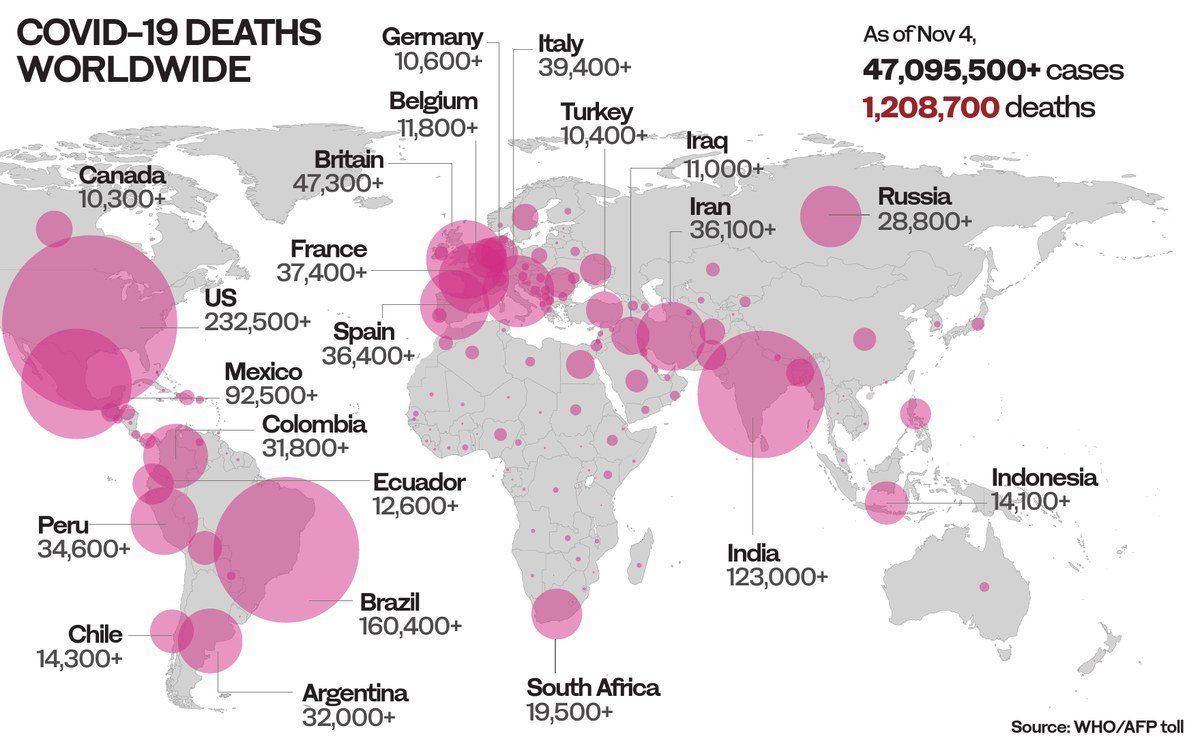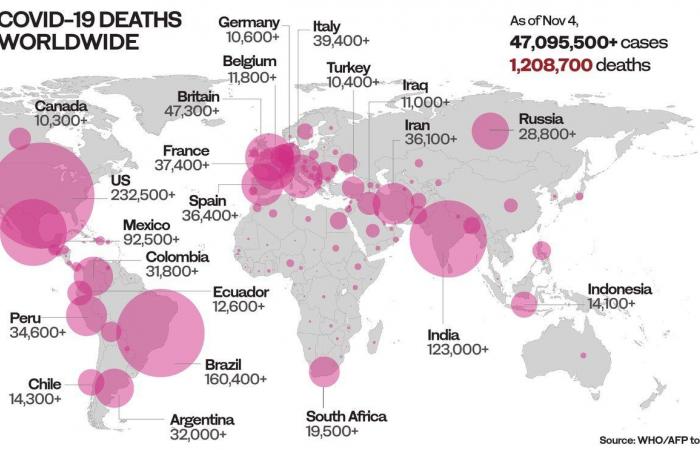Thank you for reading the news about Why COVID-19 death rates have declined despite fresh waves of infections and now with the details
Jeddah - Yasmine El Tohamy - LONDON: Western countries are in the grip of a second coronavirus wave which has defied even the most pessimistic forecasts in its speed and ferocity. It has progressed faster than the British government’s worst-case predictions, while in the US — still the world’s worst affected country — almost 100,000 new cases were recently posted in just one day.
The story is the same throughout much of Europe and elsewhere: record COVID-19 infection rates and hospitals stretched to the absolute limit.
For many, the coming winter brings a sense of deja vu, as national, regional and citywide lockdowns force people back inside their homes and away from their loved ones for the second time this year.
But while the pandemic grinds on, observers have noticed a fundamental difference between this surge and the numbers when the virus first emerged. Currently, the number of people dying is not keeping pace with new infection cases.
More than 1,000 people were dying every single day in the UK during the pandemic’s April peak. Now, a smaller number — around 300 daily deaths — are being clocked compared with the bleak early months. Tragic, yes, but notably better.
So, why the disparity? The answer provides a sliver of optimism even as hopes of a swift vaccine breakthrough fade. Dr. Stacey Rizza, an infectious disease expert at the US-based Mayo Clinic, told Arab News there is not “one single answer” as to why the disease appears to be less deadly this time around — but it is certainly not because the virus itself is any different.
“We are not, and never will be again, where we were in March,” she said. “Back in March we did not have a clear understanding of how COVID-19 was transmitted, so the most appropriate approach was just to lock everybody in their houses.

Remdesivir — the drug touted by US President Donald Trump as instrumental in his own COVID-19 recovery — is one example of existing medicines doctors are now throwing at the virus. (AFP)
“We now know that this is a droplet-mediated infection, and know that wearing masks, staying six feet apart, sanitizing high-touch items and avoiding large gatherings prevent its spread.”
These measures have come hand in hand with several significant advances in how doctors treat patients with COVID-19, Rizza says.
“The other reason why we aren't in March and never will be again is that we have a much better understanding of how the virus works, how it replicates and how we need to treat it — and we have drugs,” she said.
Remdesivir — the drug touted by US President Donald Trump as instrumental in his own COVID-19 recovery — is one example of existing medicines doctors are now throwing at the virus. “We know that this drug makes a difference and it saves lives,” Rizza said.
Medical staff in crowded hospital wards have also learned through bitter experience how to reduce the mortality rate. “We understand better how to ventilate people, and how to take measures in their critical care that we didn’t quite understand back in March — we’re much better at doing it now,” Rizza said.
Key to this was recognizing the virus moves through two distinct stages. The first seven days — the viral stage — are characterized by fever, chills and body aches. Then, at around day seven or 10, “patients either get better or they go on to inflammatory dysregulation.”
Inflammatory dysregulation is when the body’s immune response goes into overdrive and causes damage in its attempt to eradicate the virus — a major contributor to COVID-19 deaths. Now advanced drugs can target the sources of this immune response with pinpoint accuracy and neutralize it, drastically improving chances of survival.
“Around the world we have more tools in the toolbox, better understanding of the virus, and better ways to manage the critical illness than we did in March — and the mortality rate has gone down as a result,” Rizza said.
Professor Keith Neal, an infectious disease expert from the University of Nottingham, concurs, saying that “treatments have definitely improved.” However, according to him, there is more to the story than medical advances alone.
“The death rates per case are dependent on the number of people you test. So, if you’re only testing very sick people — those who end up in hospital — then you end up with a high death rate,” Neal told Arab News.
As testing has expanded beyond hospitals and into the general population, this has modified the data on mortality rates to lower the relative number of deaths. This is further amplified by the increase in testing among certain demographics.
“At the moment we’re seeing a number of effects in Britain — it’s spreading rapidly among the 20-30-year-old population, who have a very low death rate. These people weren’t being diagnosed with COVID-19 back in March and April, so the death rate per case is falling markedly,” Neal said.
This increase in testing, particularly among young people who are extremely unlikely to die after contracting COVID-19, has shifted the statistics on mortality. But Neal does not dismiss the improvements in treatment out of hand.
“The thing we know about any disease is the more you treat, the better outcomes you get — you just get better at doing it,” he said, pointing to improvements such as placing patients on their front to improve oxygen flow and holding off on ventilators until later in the virus life cycle.
These improvements have specifically led to a widespread fall in hospital fatality rates among COVID-19 patients. Using this metric avoids mortality data being skewed by huge increases in testing, and any drop in hospital mortality rates shows treatments are becoming more effective than they were just half a year ago.
Despite the advances in treatment and mass testing, both Neal and Rizza are clear: COVID-19 is still deadly, thousands are still dying every day, and the public cannot afford to be complacent. Even people with mild symptoms may experience long-term effects, known as “long COVID,” which are not yet fully understood.
The World Health Organization (WHO) echoes this point. “We have learnt a lot about how to care for people,” a WHO spokesperson told Arab News. “The bottom line is that a vast majority of the world’s population remains at risk. The virus has the potential to do enormous damage unless we take all the actions needed to stop its spread.”
To manage this vulnerability, “governments need to provide leadership, clear communication and strong public health measures …. Individuals need to maintain physical distancing, clean their hands frequently, and wear a mask.”
Twitter: @CHamillStewart
These were the details of the news Why COVID-19 death rates have declined despite fresh waves of infections for this day. We hope that we have succeeded by giving you the full details and information. To follow all our news, you can subscribe to the alerts system or to one of our different systems to provide you with all that is new.
It is also worth noting that the original news has been published and is available at Arab News and the editorial team at AlKhaleej Today has confirmed it and it has been modified, and it may have been completely transferred or quoted from it and you can read and follow this news from its main source.







